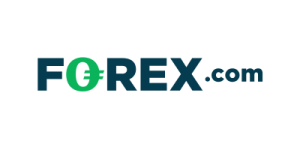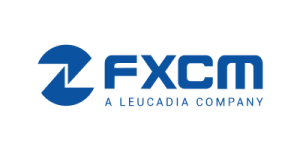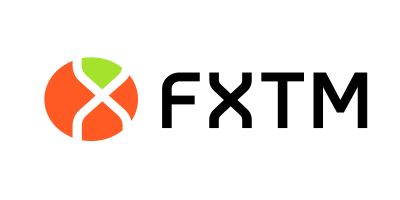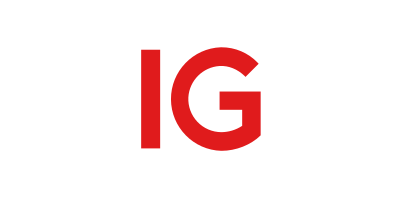If we ask someone what is Forex?, surely we will get varied answers depending on the knowledge and experience of the person we are talking to. Some could be too general and scattered while others perhaps too precise, simplifying the subject only to the purchase and sale of currencies. And although the topic does go there, without a doubt there is a universe of information about it and it would be convenient to know at least the most elementary aspects if we are considering the possibility of venturing into it. So let’s start at the beginning.
International Financial Market and Foreign Exchange Market
The International Financial Market is the place where financial products and assets are generated as a result of the financial needs of individuals, companies, the State or a society in general. It sets the prices of financial assets and instruments to carry out purchase and sale operations. It is made up of the money market, the capital market and the foreign exchange market.
The global foreign exchange market is the place where the currencies of different nations are exchanged. It is known as the foreign exchange market, Forex or FX and is the largest of all financial markets in the world. With a daily trading volume of 6.6 trillion (6.6 trillion Anglo-Saxon) US dollars, it is far ahead of the rest of the markets in terms of volume. Without a doubt, in such a large market it is easy to find a seller or a buyer.
Unlike other financial markets, the foreign exchange market does not have a physical location; does not have a central place of exchange, but operates through an electronic network of banks, corporations and individuals who exchange one currency for another in an over-the-counter (OTC) market. The absence of this physical exchange is what allows this market to function 24 hours a day, 5 days a week, covering different time zones through the major financial centers in each region. The diversity and enormous volume of operations that are agreed upon make it difficult even for governments to control its direction.
Participation in the foreign exchange market is basically made up of large professional agents in this sphere: financial institutions, central banks, commercial companies, but also private investors through intermediaries (brokers) or investment fund managers. That is why it is said that currently, if there is an effective platform that provides instruments and prices, and with adequate knowledge about its operation, anyone who wishes to invest could do so, and take benefit from the advantages this market offers due it is the largest and liquid of the world.
To give us a better idea, the following table shows the main financial centers where currencies are traded, as well as the percentages of operations carried out in each one, on the top UK:
| United Kingdom | 43.1 % |
| United States | 16.5 % |
| Singapore | 7.7 % |
| Hong Kong | 7.6 % |
| Japan | 4.5 % |
| Switzerland | 3.3 % |
| Others | 17.3 % |
The foreign exchange market is considered the base market, since the prices of the different currencies are established in it and this price is called the exchange rate.
Exchange rates and most traded currencies.
A definition of exchange rate states that it is nothing more than the price at which, one currency is traded with respect to another in the market, also appears as, “the amount of a currency that can be exchanged for a unit of another currency. In fact, the exchange rate is the price of one currency in terms of another. ”1 Like the exchange rate, every purchase and sale operation has a double character, because when buying one currency, inevitably, the other is being sold.
A definition of exchange rate states that it is nothing more than the price at which, one currency is traded with respect to another in the market, also appears as, “the amount of a currency that can be exchanged for a unit of another currency. In fact, the exchange rate is the price of one currency in terms of another. ”1 Like the exchange rate, every purchase and sale operation has a double character, because when buying one currency, inevitably, the other is being sold.
| 1. | USD | 88.3 % |
| 2. | EUR | 32.3 % |
| 3. | JPY | 16.8 % |
| 4. | GBP | 12.8 % |
| 5. | AUD | 6.8 % |
| 6. | CAD | 5.0 % |
| 7. | CHF | 5.0 % |
Currency pairs
As we have seen, currency exchange is the purchase of one currency and the simultaneous sale of another. So, all FOREX trades involve two currencies. The first currency on the left is the base currency and the second on the right is its counterpart. Following the previous example, in the EUR/USD pair, the euro would be the base currency and the dollar would be its counterpart.
The following pairs are among the most traded, accounting for around 60% of the total trade:
| Pairs | % |
| USD / EUR | 24.0 |
| USD / JPY | 13.2 |
| USD / GBP | 9.6 |
| USD / AUD | 5.4 |
| USD / CAD | 4.4 |
| USD / CHF | 3.5 |
Classification of currency pairs:
• Major Pairs (Majors). Major or Major Pairs are those that contain the US dollar and another major currency. These are the most traded currency pairs on the market, the most liquid and with the lowest spreads. The main pairs are seven: EUR/USD, GBP/USD, USD/JPY, AUD/USD, USD/CHF, USD/CAD, NZD/USD.
• Minor pairs (Minors). Minor pairs, also known as cross pairs, are the currency pairs that can be formed from the major pairs, but eliminating the US dollar. Usually these pairs also have good liquidity and low spreads but not like the majors. Ex. EUR/JPY, EUR/ GBP, GBP/CHF, AUD/JPY, EUR/CHF.
• Exotic pairs. These currency pairs are those that have a major currency and a currency from a small or emerging economy. These currency pairs are usually not very liquid and their spreads are much higher than those of the major and minor pairs. Ex. USD/MXN, USD/BRL, USD/ZAR, USD/KRW, EUR/TRY.
How to interpret the prices?
In trading currency pairs you will always see two prices, one to buy and one to sell. Let’s look at the following example:
| Pair | Bid (Buy) | Ask (Sell) |
| EUR/USD | 1.1932 | 1.1935 |
The above exchange rate represents the value in Dollars (counterparty or quoted currency) with respect to one Euro (base currency), from the above it follows that 1 unit of EUR is equivalent to 1.1932 units of USD.
Now, the purchase price (Bid) is the one that agents (dealers, brokers) are willing to pay for the base currency (EUR) and at which a trader or investor, could sell that currency on the trading platform. We would say we are short when we sell the base currency.
The sale price (Ask) is the one that the agents (dealers, brokers) are willing to sell the base currency and at which a trader or investor could buy that currency on the trading platform. We would say we are long when we sell the base currency.
Spread
The buying price will always be less than the sale price and the slight difference between the purchase price and the sale price is called the spread. It can be fixed or variable and it is a profit that the broker has for executing our operation.
Following our example, then, the spread in this quote would be 0.0003, obtaining this result from the difference between the sale and purchase prices (1.1935 -1.1932).
Generally Market Makers brokers have a fixed spread, and ECN or STP brokers have a variable one which is lower especially in times of low volatility. Each currency pair has its spread. The most liquid currencies have a lower one and the most volatile ones usually have a higher one.
Being well informed about the spread charged for trades is important for costs and profitability. It is something to keep in mind when choosing a broker, especially in very active trading styles such as scalping.
PIP
The Pip (from initial Percentage in point or Price Interest Point) is the unit of measure in which currencies are quoted. A pip is equivalent to a single digit move to the fourth decimal place in most currency pairs. The most notable exception is the case of the pairs that include the Japanese Yen, in which the movement would be in the second decimal. Following our example, we could then say, the spread on the EUR/USD pair is 3pips (0.0003).
| Pares | PIP |
| EURUSD | 0.0001 |
| GBPUSD | 0.0001 |
| USDJPY | 0.01 |
Lots
Lots are the units of base currency that we buy from the pair. Lots are usually 100,000 units. For example, if we buy 1 lot of EUR/USD, we would be buying 100,000 Euros. But don’t worry about the number if you don’t have these amounts. Most brokers allow the use of mini and micro lots that are referenced at 10,000 and 1,000 units of base currency.
Schedule
FOREX trading begins Sunday 5:00 p.m. New York time (EST), when operations begin in New Zealand and Australia. Asian markets follow Tokyo at 7:00 p.m. EST, Singapore and Hong Kong 9:00 p.m. EST. Followed by the European markets Frankfurt 2:00 a.m. EST and London 3:00 a.m. EST. Lastly, the US markets at 8:00 a.m. Monday’s EST. Every successive day at those times they reopen until Friday 5:00 p.m. EST when New York closes. This is why it is said that the FOREX market works 24 hours a day.
The most active trading hours are when the markets overlap; first Asia and Europe between 2:00 a.m. and 4:00 a.m, then Europe and the United States overlap between 8:00 a.m. and 11:00 a.m. when all currency pairs are actively traded.
What is Forex? Summing-up.
In recent years, currencies have become one of the most popular products to trade. Access to the FOREX markets via the Internet has aroused great interest from small traders who were previously excluded from this huge market.
Most of the trading is done on the interbank market and cannot be directly accessed by retail traders. Therefore, forex traders create a market for retailers, serving as intermediaries between them. Initially, the foreign exchange market was created to facilitate the sale of foreign currency to customers who needed it, however, the vast majority of transactions carried out today are of a speculative nature.
In short, the foreign exchange market is ideal for trading and offers us a magnificent opportunity due to its advantages and characteristics, here are some of the most distinctive:
- It works 24 hours a day. (Except on weekends).
- High liquidity.
- No commissions.
- Variable lot size.
- Low transaction cost.
- Quality and speed of execution. Almost instant transactions.
- Low margin
- High leverage. (be careful with this)
- Market with two directions.
- Decentralized market.
- Geographic dispersion.
- Online trading.
- Limited regulation.
- Transparent market.
- Large number and variety of participants.
- Limited sliding (Slippage)
Reference:
- Triennial Central Bank Survey of Foreign Exchange and Over-the-counter (OTC) Derivatives Markets in 2019. Bank for International Settlements (BIS).
- Fabozzi, Frank J. Modigliani, Franco; Ferri, Michael G; Financial Markets and Institutions. Pearson Education.
- What is FOREX?Do you want to know what Forex is? An approach to the subject with detailed and useful information on its operation and main characteristics.
- Types of brokersThere are several types of Forex brokers and learning about them can have a huge impact on your Forex trading experience.
- 10 Basic Forex Terms We Should Know.There are certain basic Forex terms that we must know before operating in the markets and thus have a greater chance of success.
- How to choose a Forex broker?In this article we will show you how to choose a Forex broker, but not just any one, but one that suits your needs.
- Regulation in the Forex marketRegulation in the Forex market is one of the main criteria that must be analyzed before choosing a broker.





